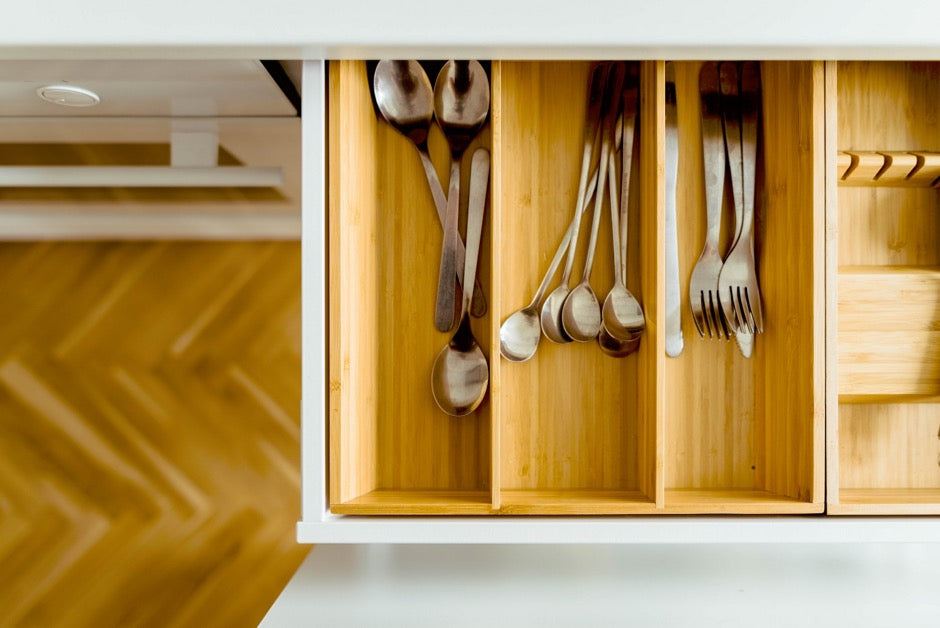
May 02 , 2017
Eight Places that Bacteria Can Hide in Your Kitchen
The kitchen provides the ideal environment for disease-carrying bacteria and viruses to breed. Unfortunately, the places most people assume are the dirtiestfor example, countertops or the microwave keypadare the places with the lowest germ count. To help you keep healthy and your kitchen clean, here are eight places that bacteria hide in your kitchen.
Water Filters
Drinking water is an important part of staying healthy. Many households now have water filters attached to their faucets to ensure the water they drink is of the highest quality. Unfortunately, faucet and refrigerator water filters are one of the places that are often overlooked when it comes to cleaning the kitchen. The moist environment is the perfect breeding ground for bacteria and mold, including E. coli.
Clean It! For refrigerator water filters, consult your user manual. For whole house filters, it is recommended you soak the filter in a dilute solution of muriatic acid and rinse thoroughly in clean water.
Sponges
Sponges have the honor of The Dirtiest Item in the Kitchen. Their constant dampness, the porous structure, and the food particles and messes they wipe up create a natural breeding ground for bacteria.
Very few people disinfect their sponges and cloths after they use them, so food particles and bacteria stay in the sponge, breeding. Moreover, when we wipe with dirty sponges, the bacteria make their way into our hands, which then spread to every surface we touch.
Clean It! Cleaning sponges is easy. You can disinfect your sponges daily using a solution of dilute chlorine and water. Alternatively, you can zap your rinsed sponges in the microwave to remove 99.9% of bacteria.
Refrigerator Compartments

Lets face it. We rarely eat all the food we store in our refrigerators, and, the longer it sits in the fridge, the more it rots and attracts mold, bacteria, and yeast. The biggest culprits are the meat compartment, vegetable crisper, and the fridge seal. Small food particles can get trapped, meat juices spill, and vegetables rot, allowing bacteria to grow even in the chilly atmosphere.
Clean It! Your fridge should be cleaned out once per week to ensure your food stays fresh and disease-free. Natural, non-toxic products are the best for cleaning your fridge. Make sure you remove all shelves and compartments to clean in all the nooks and crannies.
Spatulas
Rubber spatulas, specifically, spatulas where the head and the handle separate, have been found to be hotbeds for bacteria to thrive. Though most people will scrub their spatula after using it, to remove food particles, very few people wash the two pieces separately. This means the space where the pieces join can contain food and dirty dishwaterthe perfect recipe for bacterial growth.
Clean It! Wash both pieces separately after soaking them in a solution of 2 parts water, 1 part hydrogen peroxide, with a few drops of tea tree oil.
Can Openers
One unlikely source of bacteria in your kitchen is the humble can opener. Most people wouldnt think to clean their can opener before throwing it back in the utensil drawer. However, when opening cans, the can opener comes into contact with the food or preserving juices inside. Even in small amounts, these food particles provide energy for bacteria to grow, and one bacterium can quickly become millions.
Clean It! After every use, wash your can opener with warm, soapy water or throw it in the dishwasher if there arent any parts that can be damaged.
Blender Gaskets
You may use it to create nutritious smoothies, but it can be anything but healthy because another unexpected place that bacteria love to hide is in the rubber blender gasket. When using the blender, food can spill into the gasket, and people rarely take their blender apart to clean it properly. This means that food particles stay trapped, attracting bacteria.
Clean It! It may be a hassle, but you need to take your blender completely apart, after every use, and scrub down every component with warm soapy water. You can also put the dishwasher-safe parts in the dishwasher on high heat to disinfect them.
Food Storage Containers
Keeping leftovers in rubber sealed containers may no longer be the best idea. The seals can harbor E. coli and salmonella because many people cannot (or do not) remove the seals to clean underneath them. Often, people also store produce in these containers without washing it first. Unwashed produce can spread bacteria, which can transfer to other food products subsequently stored in the same container if it is not washed properly.
Clean It! Simply take the rubber seal off the container, wash with warm soapy water, and put all the pieces in the dishwasher to sanitize them.
The Kitchen Sink

Finally, the kitchen sink is one of the germiest places in the kitchen. The sink is constantly exposed to food particles, as well as being the place we rinse our dirtiest kitchen itemthe sponge. We spend so much time cleaning other items in the sink, we often forget to clean the sink itself.
Clean It! Unfortunately, a quick rinse with clean water isnt going to cut it. For stainless steel sinks, scrub the sink down with detergent once per day, and, to disinfect it, spray with undiluted white vinegar and leave it for several minutes before rinsing. Dont forget to wipe the faucet and taps.


